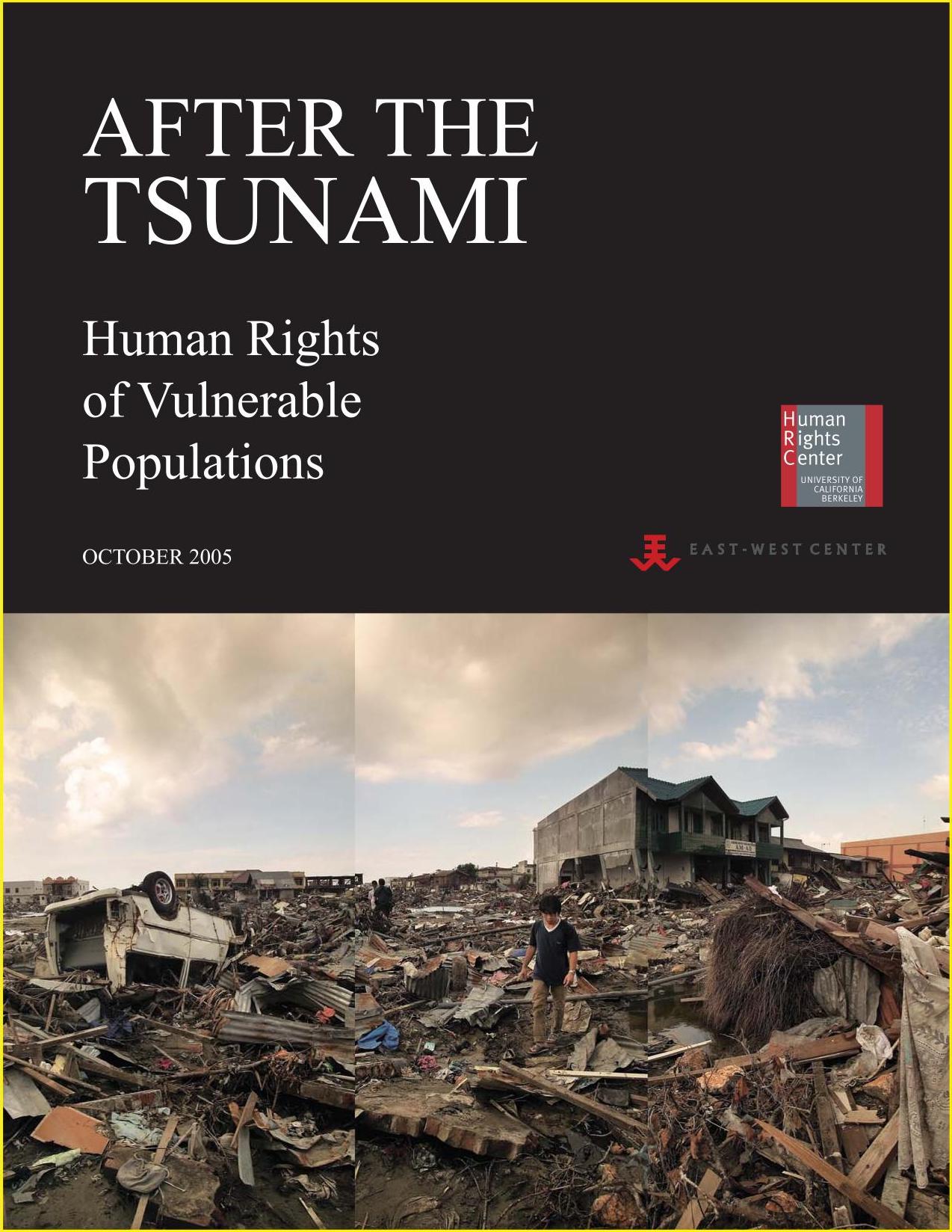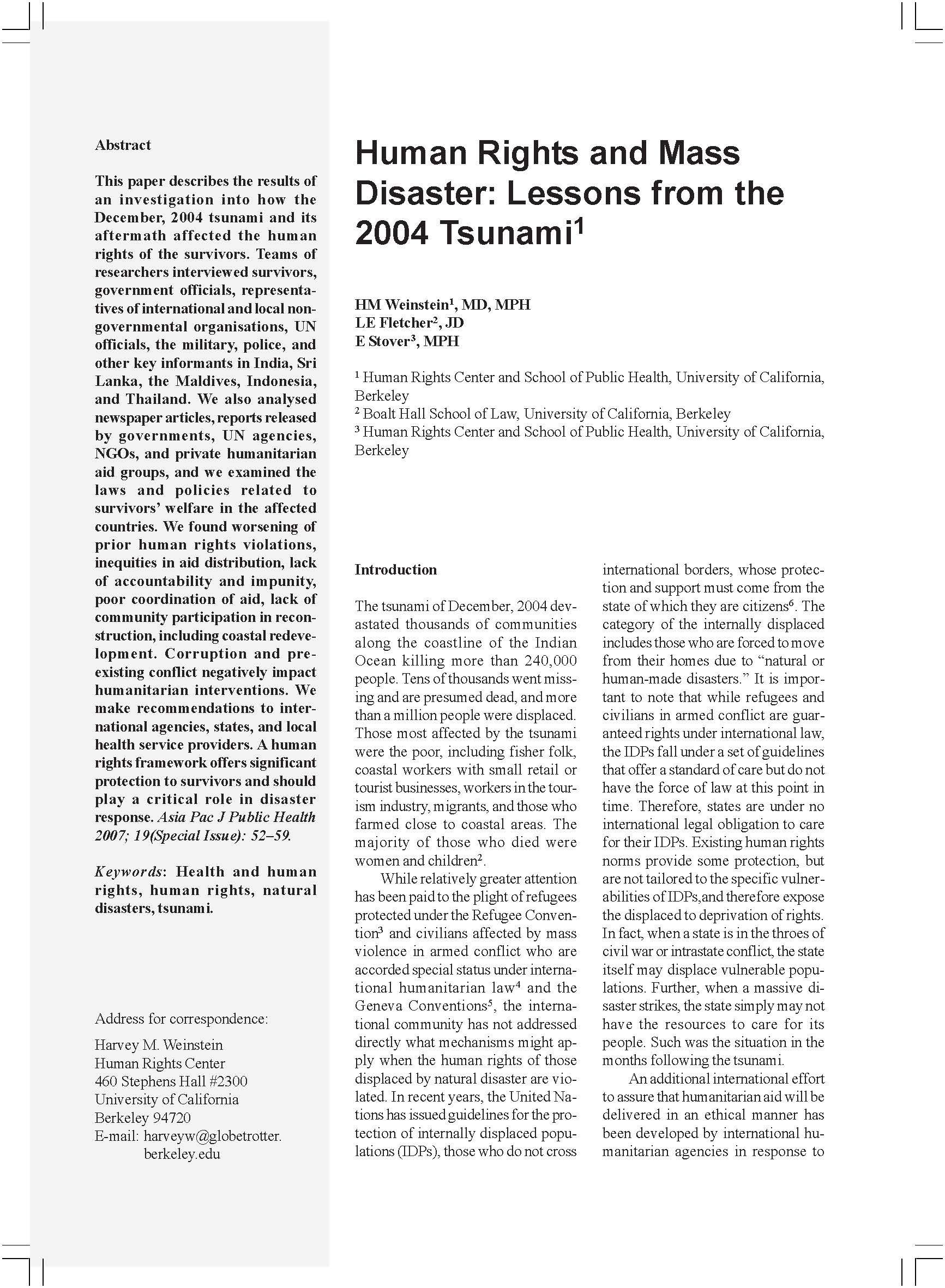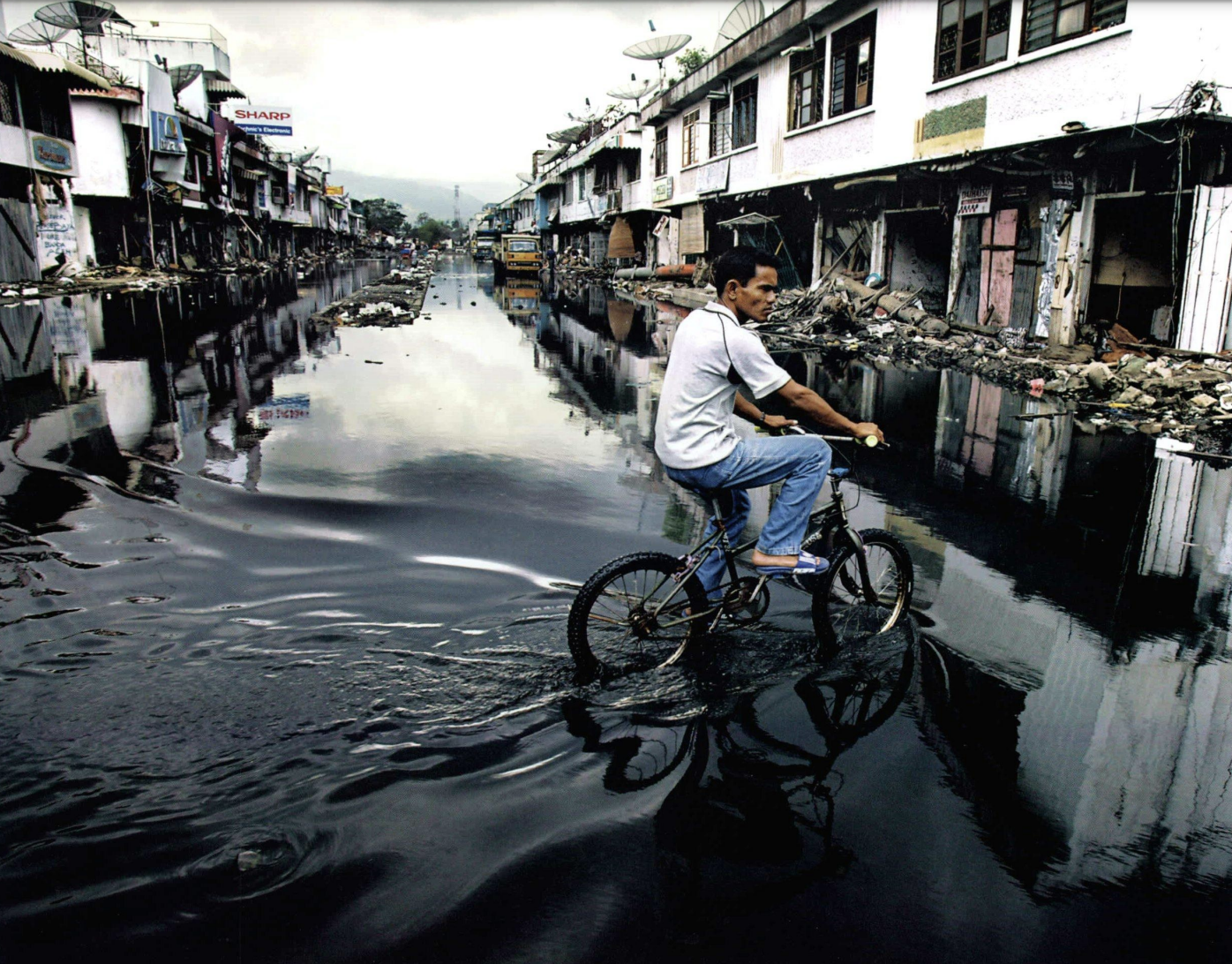After the Tsunami: Human Rights of Vulnerable Populations
Download PDFSummary
The tsunami of December 26, 2004 devastated thousands of communities along the coastline of the Indian Ocean. More than 240,000 people were killed. Tens of thousands went missing and are presumed dead, and more than a million people were displaced. Those most affected by the tsunami were the poor, including fisher folk, coastal workers with small retail or tourist businesses, workers in the tourism industry, migrants, and those who farmed close to coastal areas. The majority of those who died were women and children. Immediately following the tsunami, international aid agencies feared that human traffickers might seize the opportunity to compel those most vulnerable (women, children, and migrant workers) into situations of forced labor. Fortunately, few incidents of trafficking were reported, although other human rights problems, including arbitrary arrests, recruitment of children into fighting forces, discrimination in aid distribution, enforced relocation, sexual and gender-based violence, loss of documentation, as well as issues of restitution, and land and property tenure soon emerged in certain tsunami-affected areas. In countries where corruption and bureaucratic incompetence are rife, certain individuals and groups may manipulate their political connections to receive or distribute aid at the expense of others. Still other groups may receive little or no aid because of their ethnicity, religion, gender, age, or social standing. These abuses can leave individuals and families at risk and prolong the time they have to stay in poorly built and even dangerous camps and shelters for internally displaced people. This report presents an interview study of hundreds of tsunami survivors and key informants in five countries — India, Indonesia, the Maldives, Sri Lanka, and Thailand — affected by the tsunami of December 2004.


